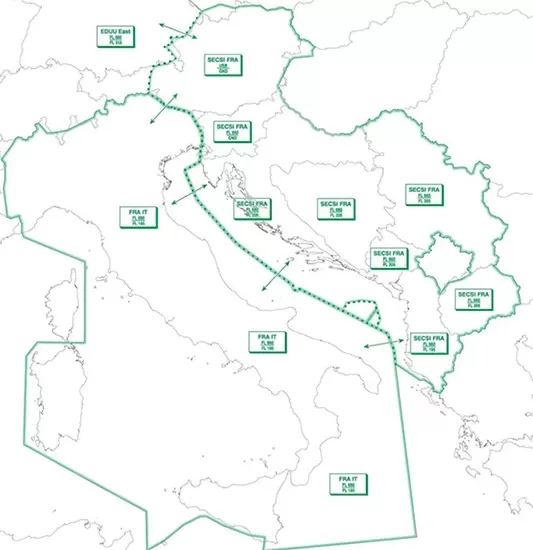On March 21, 2024, Cross-Border Free Route Airspace (FRA) was established between South East Common Sky Initiative Free Route Airspace (SECSI FRA) and Italian airspace (FRAIT). It enables the users to plan their flights no matter the borders of Flight Information Regions, i.e. Areas of Responsibility of individual sectors.
Cross-border FRA operations will be available H24 between FRAIT and SECSI FRA, from FL195/FL205 to FL660, depending on the respective state, i.e. Air Navigation Service Provider.
The goal of the initiative is to make it possible for airspace users to plan their routes according to their preferred flight profiles, which will result in increased cost efficiency and decreased negative impact on the environment, i.e. less fuel consumption and emissions of greenhouse gases. Besides the very implementation of FRA, the level of safety and capacity should be maintained or improved.
Pursuant to the Commission Implementing Regulation (EU) 716/2014, FRA was to be implemented until January 1, 2022, and pursuant to the Commission Implementing Regulation (EU) 2021/116, which includes cross-border FRA connectivity to at least one neighboring state by December 31, 2025, SECSI FRA had already met that target through its connection to the east sector of DFS (EDDU East) by night, while the day-long connection with FRAIT represents the extension of that initiative.
SECSI was initiated in 2016, and it currently encompasses airspace of Albania, Austria, Bosnia and Herzegovina, Croatia, Serbia, Montenegro, Slovenia, and North Macedonia. The cross-border initiative will be continued through its extension to the south, towards Greece, and by enabling cross-border operations between SECSI FRA and HELLAS FRA.
It is also planned to connect SECSI FRA and FRACZECH to enable the unhindered connection to Central Europe in 2026, as well as to enable cross-border operations between SECSI FRA and SEE FRA (airspace of Bulgaria, Hungary, Romania, Slovakia, Moldavia, and the aforementioned Czech Republic) by the end of the decade, which would result in free flight planning on the territory of almost one third of Europe.
